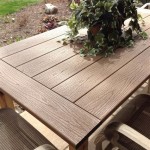Swimming Pool Patio Tiles: A Comprehensive Guide
Selecting the appropriate tiles for a swimming pool patio is a multifaceted decision requiring careful consideration of various factors. These factors encompass aesthetics, safety, durability, cost, and maintenance. The wrong choice can lead to a hazardous, unsightly, and costly patio that detracts from the overall enjoyment of the pool area. This article provides a comprehensive overview of the key aspects to consider when choosing swimming pool patio tiles, empowering individuals to make informed decisions that result in a beautiful, safe, and long-lasting pool environment.
Safety Considerations: Slip Resistance and Heat Absorption
Safety is paramount when selecting tiles for a swimming pool patio. The primary safety concern revolves around slip resistance, particularly when the surface is wet. Pool patios are inherently exposed to water, making slip-resistant tiles crucial for preventing accidents and injuries. The industry standard for measuring slip resistance is the coefficient of friction (COF). A higher COF indicates greater slip resistance. Tiles suitable for pool patios should ideally have a COF rating of 0.6 or higher, as indicated by the American Society for Testing and Materials (ASTM). This rating ensures adequate traction, even when the surface is wet.
Materials with textured surfaces, such as those with a honed, brushed, or embossed finish, generally offer better slip resistance compared to smooth, polished surfaces. The texture provides increased grip, reducing the likelihood of slipping. Some manufacturers specifically market tiles as "pool-safe" or "slip-resistant," and these often undergo rigorous testing to meet specific safety standards.
Another important safety consideration is heat absorption. Dark-colored tiles tend to absorb more heat from the sun than light-colored tiles. This can result in extremely hot surfaces that are uncomfortable or even dangerous to walk on barefoot, especially during peak summer months. Opting for lighter-colored tiles or tiles with reflective properties can significantly reduce surface temperatures and enhance user comfort. Specialized "cool pool deck" coatings are also available, designed to reflect solar radiation and maintain a comfortable surface temperature.
Beyond the tile material itself, proper installation is critical for maintaining safety. The patio surface should be properly graded to ensure adequate drainage and prevent water from pooling. Pooling water can create slippery conditions and contribute to algae growth, further increasing the risk of accidents. The use of appropriate grout and sealants is also essential to prevent water from penetrating the tile surface and undermining its integrity. Regular cleaning and maintenance can further enhance the safety of the pool patio by removing algae, mildew, and other contaminants that can reduce slip resistance.
Material Options and Their Properties
A wide array of materials is available for swimming pool patio tiles, each with its own unique set of properties, advantages, and disadvantages. Understanding these characteristics is crucial for selecting the material that best suits specific needs and preferences. Common material options include:
- Porcelain: Porcelain tiles are a popular choice due to their durability, water resistance, and versatility. They are manufactured at high temperatures, resulting in a dense, non-porous material that is resistant to staining, fading, and cracking. Porcelain tiles are available in a wide range of colors, patterns, and textures, allowing for diverse design options. They also offer good slip resistance, especially when textured.
- Ceramic: Ceramic tiles are similar to porcelain but generally less dense and less durable. They are more porous than porcelain and may be more susceptible to water damage and staining. While typically less expensive than porcelain, ceramic tiles may not be the best choice for high-traffic or heavily-used pool areas. Similar to porcelain, textured finishes can enhance slip resistance.
- Natural Stone: Natural stone tiles, such as travertine, slate, sandstone, and limestone, offer a unique and elegant aesthetic. They provide a natural, earthy feel and can add significant value to a property. However, natural stone tiles are generally more porous than porcelain or ceramic and require regular sealing to protect them from water damage, staining, and fading. Some natural stones can also become very hot in direct sunlight.
- Concrete: Concrete tiles are a durable and cost-effective option for pool patios. They can be manufactured in various shapes, sizes, and colors and can be textured to enhance slip resistance. Concrete tiles are relatively easy to maintain and can withstand heavy use. However, they can be susceptible to staining and require regular sealing to maintain their appearance.
- Composite: Composite tiles are made from a blend of recycled materials, such as plastic and wood fibers. They are a sustainable and environmentally friendly option. Composite tiles are typically durable, water-resistant, and slip-resistant. They also tend to be cooler to the touch than some other materials, such as concrete or natural stone.
When evaluating material options, it is important to consider the climate, the level of foot traffic, and the desired aesthetic. For example, in hot climates, lighter-colored materials with reflective properties are generally preferred. In areas with heavy foot traffic, durable and stain-resistant materials like porcelain or concrete are recommended. The chosen material should also complement the overall design of the pool area and the surrounding landscape.
Installation and Maintenance
Proper installation is critical for the longevity and performance of swimming pool patio tiles. Improper installation can lead to a variety of problems, including cracking, shifting, water damage, and algae growth. It is generally recommended to hire a professional tile installer to ensure that the tiles are installed correctly and according to industry standards.
The installation process typically involves preparing the sub-base, applying a mortar bed, laying the tiles, and grouting the joints. The sub-base should be properly compacted and leveled to provide a stable foundation for the tiles. The mortar bed should be applied evenly to ensure proper adhesion and support. The tiles should be laid with consistent spacing to create a uniform appearance. The grout should be carefully applied to fill the joints and create a watertight seal. Finally, a sealant should be applied to protect the tiles and grout from water damage and staining.
Regular maintenance is also essential for preserving the appearance and integrity of swimming pool patio tiles. Maintenance tasks typically include:
- Cleaning: Regular cleaning helps to remove dirt, debris, algae, and mildew. The frequency of cleaning will depend on the level of use and the surrounding environment. A mild detergent and water can be used to clean most types of tiles. For more stubborn stains, a specialized tile cleaner may be required. Power washing can be used to clean heavily soiled surfaces, but care should be taken to avoid damaging the tiles or grout.
- Sealing: Sealing helps to protect the tiles and grout from water damage, staining, and fading. The frequency of sealing will depend on the type of tile and the sealant used. Natural stone tiles typically require more frequent sealing than porcelain or ceramic tiles.
- Inspecting: Regular inspection can help to identify potential problems early on. Look for cracks, chips, loose tiles, and grout deterioration. Addressing these issues promptly can prevent further damage and extend the lifespan of the patio.
- Repairing: Damaged tiles or grout should be repaired promptly to prevent water from penetrating the underlying structure. Cracked or chipped tiles can be replaced, and deteriorated grout can be re-grouted.
By following these installation and maintenance guidelines, individuals can ensure that their swimming pool patio tiles remain beautiful, safe, and functional for many years to come.
Cost Considerations and Budgeting
The cost of swimming pool patio tiles can vary widely depending on the material, size, style, and installation requirements. Establishing a clear budget prior to beginning the selection process is crucial for making informed decisions and avoiding overspending. The overall cost will encompass not only the price of the tiles themselves, but also the cost of installation, underlayment, grout, sealant, and any necessary site preparation.
Generally, ceramic tiles tend to be the most affordable option, followed by concrete and then porcelain. Natural stone and composite materials typically command a higher price point. The size and complexity of the patio area will also directly impact the overall cost. Larger areas will require more materials and labor, resulting in a higher total expense. More intricate patterns or designs will also increase the labor cost, as they require more precise cutting and installation.
When comparing prices, it is essential to obtain quotes from multiple suppliers and installers. This allows for a thorough assessment of different options and helps to ensure that the quoted price is competitive. It is also important to clarify what is included in the quote, such as the cost of materials, labor, and any additional services. Hidden costs can quickly inflate the overall budget, so it is crucial to have a clear understanding of all expenses involved.
Beyond the initial cost, it is also important to consider the long-term cost of ownership. Some materials, such as natural stone, may require more frequent maintenance and sealing, which can add to the overall expense. Durable and low-maintenance materials, such as porcelain or concrete, may have a higher initial cost, but can save money in the long run by reducing the need for repairs and maintenance. By carefully considering both the upfront and long-term costs, individuals can make informed decisions that align with their budget and ensure a cost-effective and aesthetically pleasing swimming pool patio.

Swimming Pool Tiles Novoceram

Swisstrax Flow Through Slip Resistant Pool Deck Tile

What Is A Swimming Pool Deck Patio Tiles Flooring Ideas

Regarding Supplying Of Swimming Pool Deck Tiles As Per Attached Purchased Order The Engineer S Blog

Slippery Porcelain Tiles On Pool Deck National Sealing

Concrete Designs Florida Tile Pool Deck Travertine Decking Swimming Decks

Swimming Pool Tiles Novoceram

8 Most Popular Materials For Swimming Pool Decks

Pool Decking Everything You Need To Know Willsha Pools

Swimming Pool Tiles And Flooring Floor Coverings In Porcelain Stoneware








